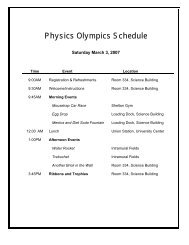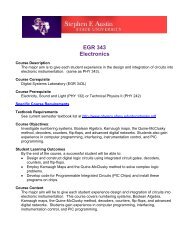Comprehensive Study Guide For Physics 101 Laboratory Exams
Comprehensive Study Guide For Physics 101 Laboratory Exams
Comprehensive Study Guide For Physics 101 Laboratory Exams
Create successful ePaper yourself
Turn your PDF publications into a flip-book with our unique Google optimized e-Paper software.
F 3F F 22R 'R F F 11The resultant can be checked experimentally on anapparatus called a force table (shown to the right). On the forcetable four mass hangers are attached to cords passing overpulleys mounted on the edge of a horizontal circular metal table.The rim of this table has a scale marked off in degrees. The fourcords are hung from a small ring slipped loosely over a post atthe center of the table. To do vector addition on the force tablefor the three vectors mentioned in the above example, designatea mass hanger to be F 1 , a different mass hanger to be F 2 , and a third mass hanger to be F 3 .Move each cord to the angle for the vector it represents. Add the appropriate masses to eachhanger so that the weight of the hanger and its load equal the magnitude of the force that is beingrepresented. Below is shown the force table (top view) with the cords in the proper positions.The line labeled E is a quantity called the equilibrant. Its magnitude is 2.2 Newtons,and its direction is 180° from the resultant. In other words, the equilibrant is the value of thevector that just balances the three vectors. The resultant is the sum of the three vectors (shownas dotted). If the equilibrant balances the resultant, then the resultant force on the ring is zero.So when the three vectors to be added are placed properly with respect to the equilibrant and thesmall pin at the center of the table is removed, then none of the weights move.F 2R F 1F 3E <strong>For</strong>ce Table21




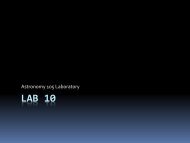
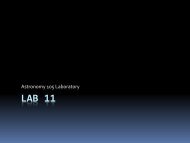
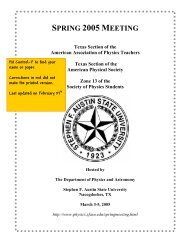

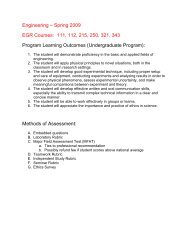
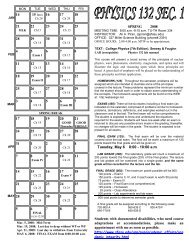
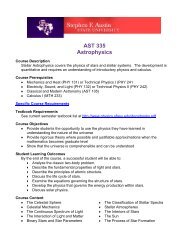

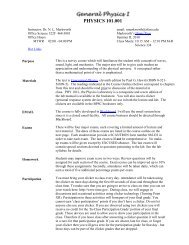
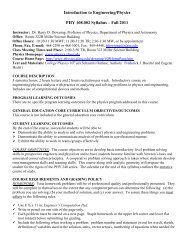
![[pdf] physics 110 fundamentals of electronics](https://img.yumpu.com/29312006/1/190x245/pdf-physics-110-fundamentals-of-electronics.jpg?quality=85)
